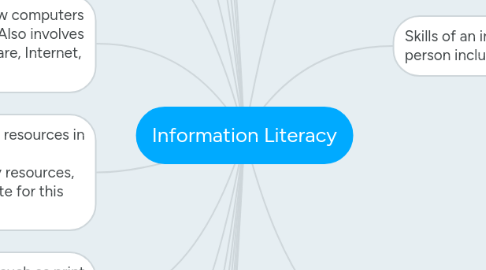Information Literacy
作者:Rita TY

1. Creative Thinking refers to "think outside the box" concept and being innovative. creative and critical thinking combined are important for effective problem solving.
2. Problem Solving is a systematic process to finding solutions to questions or issues. Steps of problem solving consist of:
2.1. DEFINE THE PROBLEM: is understanding the problem by asking: Who? What? Where? When? How? Why? How much?
2.2. LOOK FOR THE REAL CAUSE: the real causes might be hidden so carefully analyze and view from multiple perspectives.
2.3. DEVELOP SOLUTION ALTERNATIVES: by creative thinking, generate as many alternatives as possibile
2.4. EVALUATE EACH ALTERNATIVE: to evaluate which solution or solutions work best at a certain situation,
3. Higher-order thinking is a synthesis of creative and critical thinking. Also can be found in the highest 3 levels of Bloom's taxonomy.
4. Bloom's taxonomy categorizes thinking into six levels in a pyramid stating with lowest to highest thinking levels. These levels include: 1) Knowledge (information recall) 2) Comprehensiveness (understanding) 3) Application (illustrate, construct or use) 4) Analysis ( breakdown and infer) 5) Synthesis (combine) 6) Evaluation (conclude and judge)
5. Effective communication we can share information found through communicating it. An effective process of communication has the following steps:
5.1. Sender that communicates a message for the audience to understand in an encoded way
5.2. Sender selects appropriate channel of communication
5.3. Receiver receives and ecodes message
6. Organization: ability to organize and group information by taking notes and categorizing information in a systematic way.
7. Computer literacy is a basic understanding of how computers work and how it can be used to complete a task. Also involves computer related components: Hardware, Software, Internet, Multimedia, File management, Security.
8. Library literacy is an understanding of different kinds information resources in a library such as : books, encyclopedia, reference materials, directories,catalogs, database, indexes, visual resources, auditory resources, graphic resources. Also to choose which technology is appropriate for this task.
9. Media literacy: can come in many forms such as print media, audio, visual, graphic, electronic and other forms. It is used of effective learning and communication.
10. Technology literacy ability to use variety of technology to find and access information also to effectively organize, use, and communicate information.
11. Steps in effective research: 1) Define the need 2) Find the information 3) Evaluate the information 4) Organize the information 5) Communicate the information
12. Types of libraries: Academic, Public, School, Special, National libraries.
13. library staff are resources also Library services: PCs and printer/photocopy
14. Library of CUD is an (LRC) library resource center library & has many different parts: 1) reference desk, this is where the library staff are seated near the entry door with a reserve book station behind them 2) periodicals the area where newspapers, journals and magazines are placed 3) reading area located in the middle a big space with tables and chairs where students can read books. 4) surrounding the reading area are book shelves categorized by topic and book codes
15. Data to Information to Knowledge -Data: raw information -Information: data and context give information after analyzing data -Knowledge: information and rules make knowledge, to apply information.
16. A/s/?'xas;l.?
17. Definition: "the adoption of appropriate information behavior to identify, through whatever channel or medium, information well fitted to information needs, leading to wise and ethical use of information in society". -Webber (2010)
18. Skills of an information literate person include the following:
18.1. DEFINE: identifying question, problem or need.
18.2. FIND: locate, access and retrieve information from a different information sources such as: print, electronic, and even human source
18.3. EVALUATE: test the: credibility, validity, currency, reliability and appropriateness of information accessed.
18.4. ORGANIZE: compile information to allow it to: meet information needs, answer questions and solve problems.
18.5. COMMUNICATE: communication of information should be: legal and ethically used to direct a range of audience.
19. Critical Thinking is a contributing skill to information literacy and is necessary for effective use of information, following are the six major strategy areas of CT:
19.1. INFER: make a conclusion from facts.
19.2. ANALYZE: break down a complex concept into simple parts that are easily understood then make in whole again.
19.3. EVALUATE: critically examine based on certain criteria.
19.4. INTERPRET: comprehend the meaning of something
19.5. EXPLAIN: making a clear thought process, facts or concepts
19.6. SYNTHESIZE: forming a concept by combining different thoughts.


